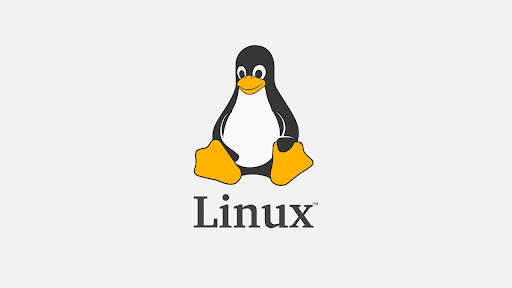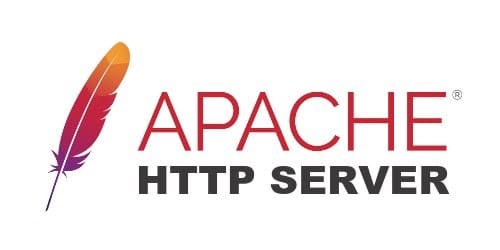What is a LAMP Stack?

When you are seeking website hosting or browsing technology news, the chances are high that you have come across the term “Lamp Stack” at some point. This refers to how a web server is set up and what software it uses in order to perform specific functions. When you are deciding on which infrastructure to use for your server, you want to remain as informed as possible, and as such, today we will be going in-depth on what exactly LAMP is and how it works.
The LAMP stack can be seen as the foundation of the websites hosted with Linux and includes Linux, Apache, MySQL, and PHP software stack.
In fact, Linux-based web servers consist of four software components. These components, arranged in layers that support one another, make up the software stack. Websites, as well as Web Applications, run on top of this underlying stack.
See Also: Linux Dedicated Server Hosting
What is LAMP stack used for?
That being the case, the common software components that make up a traditional LAMP include the following:
Linux
This is the operating system or OS that makes up the first layer. Linux sets the foundation for the stack model. All other layers run on top of this player and it plays a major role. Now, when it comes to Linux, it is an open-source, fully free operating system that has been around since the 90s.
Why Linux
Today, it is an extensive worldwide operating system that spans many industries and is popular due to the fact that it offers flexibility as well as configuration options in greater amounts, especially when compared to another operating system of a similar caliber there are many advantages of Linux. It also supports any programming language and many software programs alongside configuration files due to its open source nature.

Apache
This is the second layer that consists of the web server software, which most of the time is the Apache Web Server. This layer resides on top of the Linux layer, and web servers are responsible for translating from web browsers to their correct website.
Why Apache
In other words, it processes requests and serves up web assets through HTTP, and this means that the application is accessible to anyone in the public domain over a simple web URL. It is developed as well as maintained by an open community, and it is a mature, feature-rich server that runs a large share of the websites that are currently online.

MySQL
This is the third layer and this is where you can find the database, and its role is database management. MySQL is intended to store all of the details which can be queried by scripting to construct a website. MySQL usually sits on top of the Linux layer alongside Apache or the second layer, and in the high-end configuration, MySQL is actually offloaded to a separate hosting server altogether.
Why MySQL
In fact, with MySQL, you can store all of your information in a format that is easily queried with the SQL language, and SQL is an excellent choice if you are dealing with a business domain that is well structured, and you want to translate that structure into the backend. MySQL is suitable for running large as well as complex sites. If interested, you can check out mySQL licensing costs here.

This is on top of the previous layers and is the fourth, as well as the final layer of LAMP. This scripting layer consists of the PHP programming language as well as other similar web programming languages, and websites and web applications run within this layer. The PHP scripting language is fully open source and works with Apache to actually help you in the process of creating dynamic web pages. You cannot use HTML to perform dynamic processes such as pulling data out of a database. To provide this type of functionality, you have to drop PHP code into the parts of a page that you want to be dynamic.
Why PHP
PHP is designed for efficiency and makes programming easier through allowing you to write new code, refresh it, and immediately see the resulting changes without the need to compile it. You can swap out PHP with Perl or the Python programming language, or even use other scripting languages as well, although then it would not be LAMP software or follow the LAMP Architecture.
LAMP as a whole has classic layered architecture, with Linux at the lowest point. The next layer is Apache, followed by MySQL, and this is then followed by PHP. While it is normally set at the top or presentation layer, the PHP components sit inside Apache.

Combining Linux Apache MySQL and PHP Together
When we look at LAMP as a whole, the stack order of execution actually shows how the elements interoperate. The process starts with the Apache webserver receiving requests for web pages from a user’s browser. If the request is for a PHP file, Apache passes the request to PHP, which loads the file and executes the code contained in the file itself. PHP also communicates with MySQL to fetch any data referenced in the code.
Now, PHP then uses the code located in the file and the data from the database in order to create the HTML that browsers require to display web pages. The LAMP stack is efficient at handling not only the static web pages but the dynamic pages where the content itself can change each time it is loaded, and all of this depends on the date, time, and identity alongside many other factors.
After running the file code itself, PHP then passes the resulting data back to the Apache web server and sends it to the browser itself. It can also store this new data in MySQL and all of these operations are enabled by the Linux operating system that runs on the base of the stack.
Mixing LAMP Up
Even though LAMP uses Linux as the OS, you can use the other components with an alternative OS to meet your specific needs. There is a WAMP stack, which uses Microsoft Windows as well as MAMP with the Mac OS, and you also have WIMP that uses Windows as well as the Internet Information Services web server developed by Microsoft.
LAMP is fully open-sourced and non-proprietary, and you can avoid lock-in as a result. This leads to a high level of flexibility when it comes to selecting the right components for the specific project you are currently working on.
LAMP offers flexibility in many other ways alongside this, due to the fact that Apache is modular in design and you will find that there are existing, customizable modules that are available for many different extensions.
Another advantage of LAMP is its secure architecture as well as well-established encryption practices that have been proven in the enterprise.
LAMP Conclusion
That being the case, the LAMP stack can help you reduce development time in terms of web applications due to the fact that LAMP is an open source software that has been available for more than a decade. This means that there is a substantial LAMP ecosystem and you can build on what other people have already done in the past to make it truly your own. If you are a developer, you can also use Javascript, however, if you are developing a web application you might want to use the open source software stacks to develop your web apps that various operating systems will support. MAP plays a major role in terms of database system management as well as content management systems, in regards to web development.
Was this page helpful?

